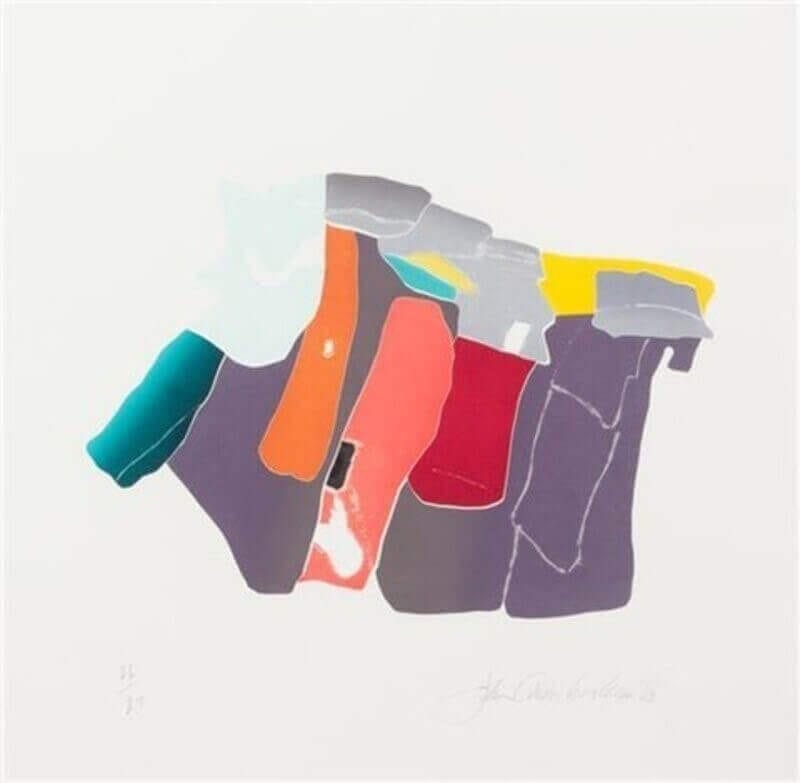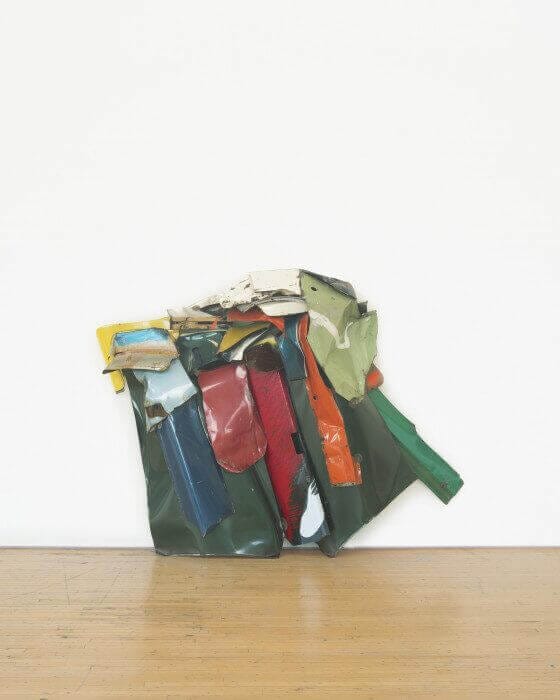John Chamberlain
John Chamberlain (1927–2011) stands as a pivotal figure in the world of Post-War American sculpture. Renowned for his innovative use of industrial materials, particularly interlocking metals, he transformed everyday objects into extraordinary works of art.
Born in 1927 in Chicago, IL, Chamberlain’s early life was marked by service in the United States Navy from 1943 to 1946. After his military service, he pursued artistic training at the Art Institute of Chicago between 1951 and 1952. Here, he began experimenting with welded sculptures, drawing influence from renowned sculptor David Smith.
In 1955, Chamberlain’s quest for artistic knowledge led him to Black Mountain College. He spent two years there, both studying and teaching, before relocating to New York City in 1957. It was during this period that he began incorporating car parts into his work, pioneering the technique of crushing and welding these materials to create his signature abstract clusters.
Chamberlain’s career took a significant leap forward with his first solo exhibition in 1960 at the Martha Jackson Gallery. This exposure helped secure his inclusion in the prestigious 1961 group exhibition “Art of Assemblage” at The Museum of Modern Art. The exhibition was a survey of artists working with two- and three-dimensional constructions and offered a fresh perspective on Abstract Expressionism.
While Chamberlain gained fame for his large-scale sculptures made from automobile parts, metals, and Plexiglas, he continually experimented with various media. His artistic exploration extended to geometric paintings, often incorporating automobile paint, which added an extra layer of complexity and intrigue to his work.
His artistic achievements were further recognized with his first retrospective in 1971 at the Solomon R. Guggenheim Museum in New York. This event solidified his reputation as a major contemporary artist.
Chamberlain’s contributions to contemporary sculpture did not go unnoticed. In 1993, he received a Lifetime Achievement Award in Contemporary Sculpture from the International Sculpture Center in Washington, D.C. Six years later, in 1999, he was honored with a Distinction in Sculpture Honor from the Sculpture Center in New York.
In the final decade of his life, Chamberlain expanded his creative repertoire to include photography. His large-format images echoed the vibrant use of color that characterized his sculptures, showcasing his sensitivity to his materials and his ability to convey profound meaning through his work. This period of photographic exploration underscored his unwavering commitment to artistic innovation and expression.
John Chamberlain passed away in New York in 2011, leaving behind a legacy that continues to inspire and influence the world of contemporary art. His work remains a testament to the power of creativity and the endless possibilities of transforming the mundane into the magnificent.
Chickmeat, 1979

